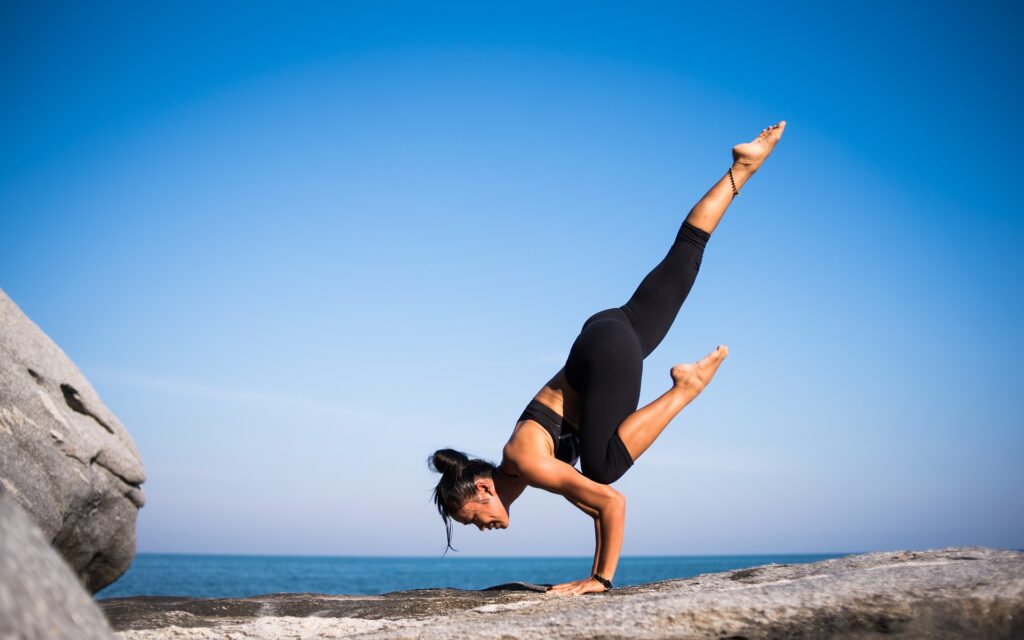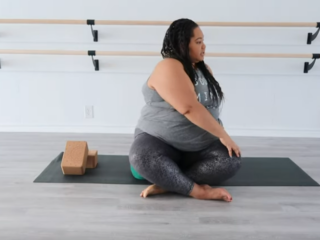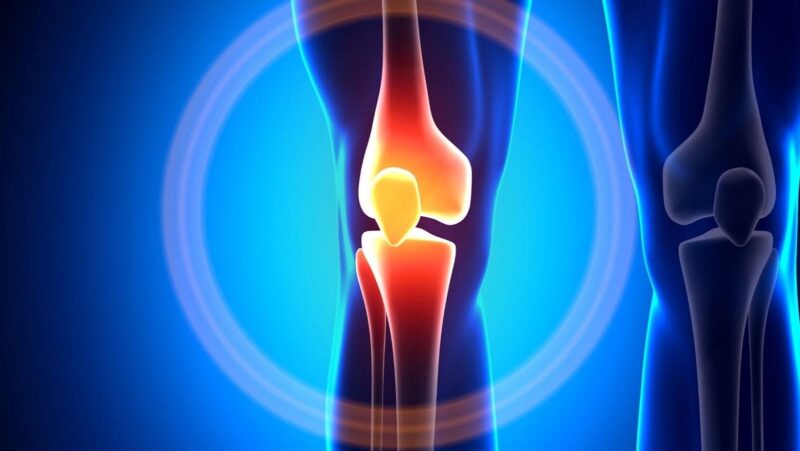
Yoga is a great way to relieve stress and get a good night’s sleep. Yoga for deep sleep can help you relax and fall asleep faster.
Yoga is a practice that can help to improve your health in many ways. These five-minute bedtime yoga poses are an effective way to wind down and relax before bed, which will reduce stress and sleep better. Incorporate cbd oils from CBDClinicals for a more relaxing and better night’s rest.
Humans are strange creatures: we’re always on the lookout for a magic medication that will make us smarter, more productive, and invigorated, while ignoring the most basic and essential tool for staying healthy: sleep.
Let’s have a look:
- why if you want to be healthy, you can’t afford to “sleep when you’re dead”
- Why society’s view of “lazy sleeping” is incorrect
- How can you tell whether your body and mind need more sleep?
- a brief and easy yoga exercise to help you sleep better.

Do you want to improve your life? This Is The One Thing You Must Do
Sleep is the health and wellness equivalent of the Swiss army knife. There isn’t a single key organ or brain function that isn’t improved by sleep and harmed when we don’t receive enough.
Scientists have developed a groundbreaking new medicine that extends your life. It improves your memory and encourages you to be more creative. It enhances your attractiveness. It helps you stay lean and reduces your eating cravings. It protects against cancer and dementia. It protects against colds and flu. It reduces the chances of heart attacks and strokes, as well as diabetes. You’ll be happier, less sad, and less stressed as a result. Do you want to learn more?
From the book Why We Sleep, by Matthew Walker
You don’t have to go without sleep for a whole night to suffer the repercussions of sleep deprivation.
According to studies, simply missing an hour or two of sleep every night, which may not seem like much, increases your risk of cancer, heart disease, Alzheimer’s, and diabetes.
In his book Why We Sleep: The Science of Sleep, Matthew Walker, a neurology professor, uncovers the tragic effects of undersleeping.
- Driving when tired is just as hazardous as driving while inebriated.
- The less sleep you get, the more prone you are to discomfort.
- You’re 45 percent more likely to develop or die from cardiovascular disease if you don’t get enough sleep.
- After a night of poor sleep, you’re likely to consume 300 calories more than normal.
- The loss of merely one hour of sleep during the March transition to daylight savings time promotes an increase in heart attacks the next day.
- You won’t be able to sleep later to make up for a restless night. In fact, the consequences of lacking sleep may be evaluated a year later.
Sleep deprivation has an effect on our neurological system, triggering a fight-or-flight reaction in our bodies long after the sleep deprivation has ended. This sets off a chain reaction, with sleep deprivation doing havoc on the body as a whole.
What is the explanation behind this?
We’re not sleeping the way nature intended, according to Matthew Walker.
The majority of us sleep in a monophasic pattern, sleeping for large periods of time at night (often less than 7 hours).
Tribes unaffected by civilization and electricity, on the other hand, follow a biphasic pattern. These folks went to bed at 9 p.m. and awoke somewhere around daybreak. By the way, that’s where the term “midnight” gets its meaning – the middle of the night.
Then, following a night’s sleep, they’d take a thirty-to-sixty-minute afternoon nap, known as a siesta in various South American and European nations.
When Greece attempted to abolish the siesta and experts attempted to measure the effects of this alteration, the results were dismal. Working men’s mortality risk climbed by 60%, and healthy men and women’s risk of dying from heart disease increased by 37% when they stopped sleeping.
Sleep deprivation isn’t always easy to detect. It’s possible that you’re sleeping too little and aren’t even aware of it.
So, how can you tell whether you’re getting enough rest?
Answering a few easy self-diagnosing questions, according to Matthew Walker:
- Could you go back asleep around ten or eleven a.m. after waking up in the morning?
- Do you need caffeine to operate before to 12:00 p.m.?
- Would you sleep beyond that hour if you didn’t have an alarm clock?
- Do you find yourself reading and then rereading (and maybe rereading again) the same line on your computer screen?
- Do you ever lose track of the color of the last several traffic lights while driving?
If you answered “yes” to at least one of the questions, you’re probably not getting enough sleep, either in terms of amount or quality.
The Best Yoga Pose To Do At Night
Late at night, you probably wouldn’t go for a run or lift big weights.
Similarly, rather of engaging in a strength-building yoga practice, consider easing into your night with a peaceful slow-paced yoga practice that includes several grounding poses and a strong concentration on the breath.
While concentrating on mental stability, this variant of Child’s pose reduces physical tension in the regions that suffer the most after a long day of sitting – hips and upper back.
Here’s a handy guide sheet for the Tread The Needle Variation of the Child’s posture.
5-Minute Yoga Routine for a Better Night’s Sleep
When you do yoga before bed, you’re killing two birds with one stone:
- assists you in entering parasympathetic mode and winding down in order to fall asleep quicker
- assists you in avoiding screen time that may interfere with your sleep.
To build healthy sleep hygiene habits, I advise you to attempt this super-simple and fast 5-minute nighttime yoga sequence tonight. Take a look at the step-by-step instructions below.
Steps 1–2 Cat-Cow
- Begin on your hands and knees in a tabletop posture.
- Ensure that your shoulders are exactly above your wrists and that your knees are squarely under your hips. Maintain a neutral spine and a downward look.
- Inhale, lower your belly button and rise your chest and tailbone to form a U-shape in your spine. Raise your head without craning your neck (Cow Pose).
- Exhale, tighten your abdominals, round your spine, and tuck your chin to your chest softly, reversing the spine’s curvature (Cat Pose).
- Do the position on your forearms if you have wrist discomfort.
- Rep 5–20 times more.
Step 3: Child’s Extended Pose
- Return the tabletop to its original state.
- Bring your big toes together and your knees and thighs to the mat’s outside corners.
- Return your sit bones to your heels on an exhale and place your body between your thighs until your forehead hits the ground.
- Maintain an openness in your shoulders by extending your arms forward, palms facing down.
- Reach forward through the fingers and lengthen from the hips to the armpits.
- Place a tiny bolster, a cushion, or a wrapped yoga blanket between your calves and the back of your thighs if you have trouble sitting on your heels.
- Hold for three deep breaths.
Step 4: Thread The Needle In An Extended Child’s Pose
- Slide your left arm beneath your right, palm facing up, while in Child’s Pose.
- Turn your head to the right and look around.
- Breathe deeply and relax your whole body.
- Switch sides after at least three breaths.
Have you tried going with the flow? Please let me know in the comments section below!
The “5-Min Relaxing Bedtime Yoga For Better Sleep” is a yoga class designed to help you relax and sleep better. The video has been created by adriene, who has over 10 million subscribers on YouTube. Reference: bedtime yoga with adriene.
Frequently Asked Questions
What yoga is best before bed?
A: A simple stretch before bed.
Is yoga before bed good?
A: Yoga can have a calming effect on your mind and body, but it is not the best before bed. It should be avoided if you are going to sleep soon after practicing yoga.
How can yoga help you sleep?
A: Yoga can help you sleep better because it helps you relax your mind and body. It also releases endorphins which make the person feel good.
Related Tags
- 5 minute bedtime yoga kassandra
- yoga before sleep for weight loss
- 5 min night yoga














